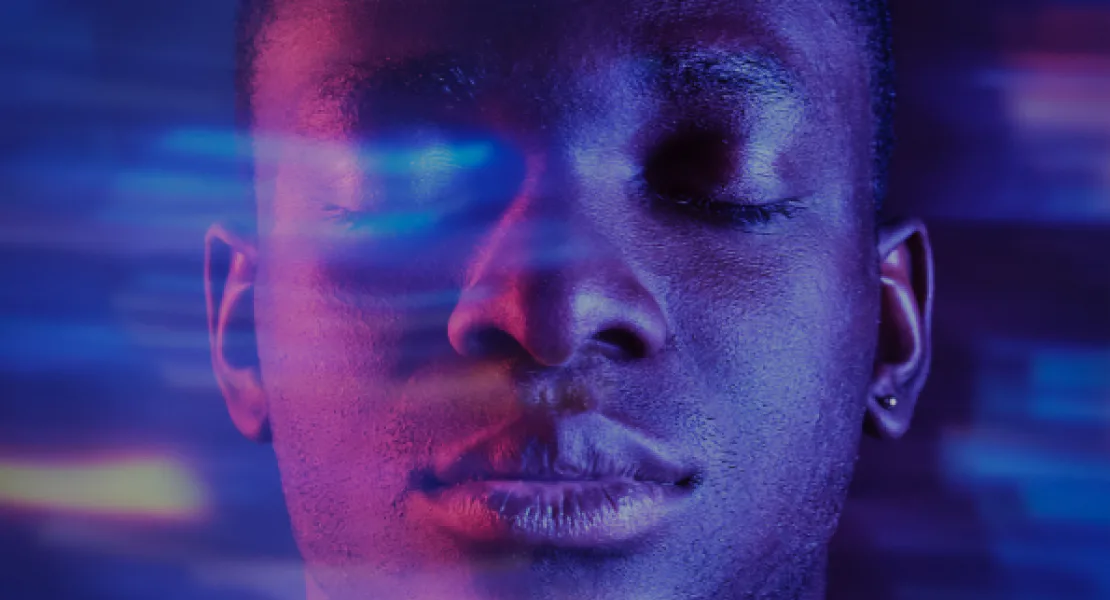Introduction
While ketamine emerged as the first psychedelic to enjoy legal use in a therapeutic setting, the road to its acceptance in this capacity was long, and took unexpected turns.
Initially used as an anesthetic, first for animals, and then soldiers during the Vietnam War, ketamine became a popular party drug during the rave scenes of the late 1980s and early 1990s. By the end of the century, so-called “Special K” had gained notoriety due to its popularity in the club and rave scene, where some would experience something known as a “k-hole.”
This event, where the body essentially shuts down and the individual experiences a powerful, and sometimes frightening, psychedelic event, led to the demonization of ketamine as a party drug. In truth, ketamine abuse in some of these settings and circumstances was both real and damaging. However, as it turned out, some those ravers might have inadvertently been deriving therapeutic benefits the whole time. In the 2000s, a new group became hip to ketamine: researchers — specifically those in the field of psychiatry.

Within a few years, researchers established that ketamine might significantly impact treatment-resistant depression and a range of other mental health conditions (more on that below). Fast-tracked by the FDA as a “Breakthrough” therapy tool (meaning the development of a drug is expedited as it may demonstrate an improvement of clinical symptoms over other available therapies), ketamine has enjoyed relatively quick progress through the research process. Today it can be prescribed for both in-clinic and at-home therapy.
Keep Up with Uncensored Psychedelic Trends
Join our newsletter at Psychedelics Uncensored.
We respect and protect your privacy. By subscribing your info will be subject to our privacy policy . Unsubscribe easily at any time
While some theorize that the psychological benefits of ketamine are derived from its ability to increase neuroplasticity in the brain (meaning that it affects the brain’s ability to adapt and rewire itself), others assert that patients reap rewards from the ketamine experience itself. As one explained, “I’m not reformed by neuroplasticity; I’m reformed by having had a break from the obsessions of my mind.” Of course, these two things may be interrelated.(1)
What Is Ketamine?
Ketamine is not a classic psychedelic, as it doesn’t create psychedelic effects through action on the brain’s 5-HT2A (a type of serotonin) receptors, which drugs like psilocybin and LSD do. Ketamine’s effects may be partially due to its action on the neurotransmitter glutamate, specifically the NMDA receptors.(2, 3, 4)
Additionally, ketamine is a dissociative anesthetic. In the context of its use as a mental health treatment, that means it can create detachment from your sense of self, physical body, and environment. In high enough doses, it acts as a general anesthetic. An increasing body of evidence suggests it can be effective in supporting the treatment of a variety of ailments of the mind.(5, 6, 7)
Indeed, after a short ketamine treatment (30 minutes to two hours), patients have reported feeling remarkable relief from emotional and/or psychological distress. For some, this is experienced as a fresh perspective on their life circumstances.
The Ketamine Experience
As with any other medication, the effects of ketamine vary depending on many factors, including dosage. Ketamine clinics use lower, sub-anesthetic doses (meaning doses too low to cause you to fall unconscious), which is where the effects get interesting. At this dosage, you may experience visions with your eyes closed, disconnection from your body (resulting in an out-of-body experience), ego loss (the dissolution of your sense of self), and feelings of bliss and joy.(8)
In isolated cases, you may experience an event commonly known as a k-hole, as mentioned. This is where you become temporarily unable to interact with your environment and may lose control of certain motor functions, like walking and speech. These events are relatively rare in a clinical setting, where trained professionals are on hand to monitor your dosage. However, they are more common among recreational ketamine users.(9, 10)
Keep Up with Psychedelic Trends
Get uncensored psychedelic news, events, and updates. Join Psychedelics Uncensored!
We respect and protect your privacy. By subscribing your info will be subject to our privacy policy . Unsubscribe easily at any time
Research on Ketamine’s Effects on Mental Health
Several high-quality clinical trials indicate that ketamine is effective at alleviating the symptoms of major depressive disorder (MDD), treatment-resistant depression (TRD), anxiety, bipolar depression, post-traumatic stress disorder (PTSD), treatment-resistant generalized anxiety disorder (GAD), social anxiety disorder (SAD), and obsessive-compulsive disorder (OCD).(11, 12, 13, 14, 15, 16, 17)
(A note on the term ‘treatment-resistant’: this is typically defined as an inadequate response to at least two courses of conventional antidepressant treatments, including medication.)(18)
It is theorized that ketamine alleviates the mental health conditions listed above in a variety of ways. One study has shown that ketamine may support rapid neurogenesis (the growth of new brain cells) and neuroplasticity (the brain’s ability to create new connections). Crucially, these changes occur in brain regions affected by depression, including the hippocampus.(19. 20, 21, 22)
Researchers have also discovered that ketamine modulates the transmission of the neurotransmitter glutamate in the prefrontal cortex. This is an area of the brain associated with attention, impulse control, and managing emotional reactions.(23)
It is believed that altering activity in the prefrontal cortex in this way allows this brain region to increase its connectivity with other regions, such as the amygdala (the fear center of the brain), which is one of the areas that contribute to depression in some cases. Individuals with depression also show reduced glutamate transmission in key prefrontal cortex regions. It is theorized that modulating glutamate in the brain supports the relief of depressive symptoms.(24, 25, 26)
As mentioned, ketamine also has dissociative effects, which may help patients disconnect from painful thoughts and feelings, creating a greater sense of objectivity. For many people, challenging emotions can feel all-consuming. Ketamine may relieve this aspect of depression by creating some distance between the person and their emotions or past trauma. However, further research into the dissociative effects of ketamine is needed to fully explore its potential antidepressant effects.(27)
The Legal Status of Ketamine Therapy
Ketamine is legal as an off-label treatment (used to treat a condition other than its original/FDA-approved application). Conditions that ketamine clinics can legally treat include depression, anxiety, PTSD, OCD, pain, and substance use disorder (colloquially referred to as addiction or substance abuse).(28)
The Food and Drug Administration (FDA) has approved esketamine (a type of ketamine that comes in the form of a nasal spray, sold under the brand name Spravato) for treating treatment-resistant depression and major depressive disorder featuring suicidal thoughts or behavior. FDA approval of esketamine means it may be covered by some insurance carriers, including Medicare and Medicaid. However, ketamine (also referred to as racemic ketamine) may not be covered by insurance providers.(29)
Where Can You Access Ketamine Treatments?
According to Medscape, 517 ketamine clinics are operating in the United States today. Another option is at-home ketamine treatment, where the patient takes a sublingual lozenge or tablet of ketamine in the comfort of their home. This tablet is placed under the tongue and dissolves. At-home ketamine treatment providers often pair the medication with online counseling services (also referred to as ketamine telehealth). One study has found this option to be a relatively safe and effective treatment for anxiety and depression.(30, 31)
There are some important differences between ketamine clinics and at-home ketamine providers:
- Ketamine clinics typically deliver the substance via an IV (intravenous) drip or sometimes IM (intramuscular) injection, and patients are supervised for the duration of the treatment.
- With at-home ketamine treatment, participants are provided with a ketamine tablet, which is placed under the tongue, where it dissolves. Instructions for treatment are generally delivered via video chat.
- There is a greater body of research on the safety and efficacy of ketamine therapy in a clinic.
- At-home ketamine is more affordable and convenient, as no visits to a clinic are required.
Access to ketamine-assisted therapy is easier than ever. Additionally, there are hundreds of clinical trials involving ketamine for mental health underway — and it will likely gain FDA approval for various mental health conditions within the next few years, increasing access and lowering costs.
Globally, ketamine is one of the most commonly used medications. It has also been designated as an essential medication by the World Health Organization (WHO) and is included on the WHO Model Lists of Essential Medicines. However, it is considered a controlled substance in many countries, and is often included in categories with other common medications such as SSRIs.
The Risks and Side Effects of Ketamine
As mentioned, ketamine has been used for decades as an anesthetic and is generally well-tolerated. The risks of using ketamine are higher for recreational purposes. When you’re taking ketamine recreationally or to self-medicate, you could have an increased risk of addiction or serious side effects. Abusing it can also lead to bladder damage (known as ketamine bladder syndrome) and other adverse effects.(32, 33, 34)
These risks are much lower in a clinical setting where the dose and number of sessions are controlled. If you join a ketamine therapy program at a clinic, medical professionals will do their utmost to ensure that you don’t experience unpleasant side effects. These steps include proper mental and physical health screenings, adequate preparation, psychological support, and aftercare. However, side effects are still possible — drowsiness, double vision, confusion, nausea, and dizziness are the most common. Ketamine may also cause complications for individuals with certain heart conditions and where an increase in blood pressure would pose a risk, as well as individuals who are pregnant or breastfeeding.(35, 36)
The Complex Impact of Ketamine on Consciousness: From Spirituality to Escapism
While psychedelics like psilocybin mushrooms, LSD, and ayahuasca are frequently associated with the ability to expand consciousness and impart a spiritual experience, anecdotal reports suggest that ketamine’s impact on consciousness and/or spirituality is more complex. While some users report that ketamine delivers a mystical, awareness-raising experience, others argue that its impact is quite the opposite, affording one an escape.
As an example of the former, in an interesting experiment conducted in the ex-Soviet Union, researchers concluded that ketamine patients experienced a “death-rebirth” cycle that provided mystical insights, resulting in the desire to create art and a new interest in reading spiritual texts. On the other hand, ketamine users in Hong Kong — where ketamine has been an extremely popular recreational drug for many years — report that it has the opposite effect, allowing them to “tune out” of stressful circumstances and block out reality.(37, 38)
This suggests that the effect ketamine has on one’s consciousness, or spiritual awareness, may have a great deal to do with individual and social factors. Regardless of individual experiences, ketamine is not typically associated with spiritual expansion or religious ceremonial purposes the way other classical psychedelics often are.
Preparing for Your Ketamine Trip
Unlike most other psychedelics, the ketamine experience is comparatively short. Typically the “trip” lasts about an hour, and the patient will feel more or less back to baseline within 1.5-2 hours. As with any psychedelic drug – classical or not – ketamine should always be approached with respect and care. You should keep your set (state of mind and intentions) and setting (where you will be taking ketamine) front and center when preparing for your journey. Make sure you have a safe, comfortable environment, either at home or at a ketamine clinic. You should also set clear, actionable intentions for your experience. What do you intend to take away from your journey? What are your goals and motivations? These are all important considerations to think about before taking ketamine.
As noted, unlike other psychedelics, ketamine is a legal, FDA-approved drug. This means that ketamine-assisted therapy can be found at professionally managed, often spa-like clinics nationwide. If you plan on taking ketamine at a clinic vs. at home, you should know a few things. Reputable ketamine clinics are run by trained staff that are on hand to ensure your experience goes smoothly. However, some clinics may have services that others do not, such as ketamine-assisted psychotherapy, pre or post-care integration counseling, and, in some cases, long-term follow-up care programs.
This, of course, all comes at a price. Ketamine clinics may charge anywhere from a few hundred to several thousand dollars, depending on what services they offer. You should spend some time researching local ketamine-assisted therapy providers and learning what this sort of treatment may cost you. You can also learn more about ketamine and psychedelic-assisted therapy by listening to our curated psychedelic podcasts.
There are also a few other things ketamine patients are advised to do pre-experience:
What to Know During Your Ketamine Journey
While every individual’s experience will be somewhat different in terms of content, the progression of the experience itself can be rather uniform.
Remember that the first several steps below apply only if you’re ingesting ketamine tablets at home. If you take it intravenously in a clinic, your provider will take care of the induction.
- Before taking ketamine, you should put on headphones to listen to directions provided by the at-home ketamine provider and/or a curated playlist of music and meditations.
- Once you’ve taken your dose, hold it in your mouth beneath your tongue for about seven minutes without swallowing (or for the length of time instructed by your provider). When swallowed, ketamine frequently causes nausea. Do your best not to swallow the medicine. It can be difficult, and the taste doesn’t make it any easier, but it’s important that you avoid doing so.(35, 39)
- Once the allotted “wait and dissolve” time is up, you will spit the medicine into a glass. Feel free to swish your mouth out with fresh water, but be sure to spit this out as well.
- Lay back and put on the eye shade provided by most at-home ketamine programs.
- While ketamine takes effect relatively rapidly, you probably won’t feel much for 5-10 minutes.(40)
- Gradually, you’ll likely experience a floaty feeling and lose awareness of your physical surroundings. Your body may feel heavy and difficult to move, and it will increasingly feel as if your mind is leaving your body.
- From here, the experience tends to be unique per patient. You may feel as if you are flying through the darkness of space. You may see colors and patterns. You may experience vivid scenes of yourself in another time, place, or even in another body. It is typically a peaceful experience, whichever the case. This will last for about 30-60 minutes.
- As the drug wears off, you’ll feel more “in” your body. You’ll become increasingly aware of what’s around you, and will likely feel somewhat tingly. This sensation can last for an hour or so.
- For all practical purposes, you will typically feel “back” in an hour or two, though it’s not unusual to feel a bit shaky or nauseous for a short while.
Integrating Your Ketamine Journey
From there, it’s time for your first integration session, during which you’ll talk with your guide about your experience. Typically your guide or therapist will schedule a follow-up integration session a few days to a week after your experience. Some services provide “integration circles,” which are essentially group integration sessions led by a guide.
Integration is the essential process of examining how the psychedelic experience can be applied to your everyday life. It involves analyzing the content of your experience, including thoughts, memories, feelings, symbols, or other images that have come to the surface throughout your ketamine journey. From there, you use discussions and other methods to determine how these occurrences relate to your day-to-day existence.
There are many integration techniques, including:
- Counseling with an experienced psychedelic practitioner, guide, and/or licensed therapist.
- Talking about your experience with someone you’re comfortable with, and who can relate with what you experienced.
- Writing about your experience in a journal or even blogging (if you’re into that).
- Painting, drawing, or otherwise making art to express what you’ve experienced.
- Meditation or yoga.
- Initiating a daily mantra and/or gratitude practice.
The list goes on. Less important than your chosen method of integration is that you do something to integrate the experience, which reinforces the wisdom gleaned from the psychedelic journey. This helps deepen the insights from your ketamine experience, and support growth.
Sources

1. Witt, E. (2021, December 29). Ketamine Therapy Is Going Mainstream. Are We Ready? The New Yorker. https://www.newyorker.com/culture/annals-of-inquiry/ketamine-therapy-is-going-mainstream-are-we-ready
2. López-Giménez, J. F., & González-Maeso, J. (2017). Hallucinogens and Serotonin 5-HT2A Receptor-Mediated Signaling Pathways. Current Topics in Behavioral Neurosciences, 36, 45–73. https://doi.org/10.1007/7854_2017_478
3. Mion, G., & Villevieille, T. (2013). Ketamine Pharmacology: An Update (Pharmacodynamics and Molecular Aspects, Recent Findings). CNS Neuroscience & Therapeutics, 19(6), 370–380. https://doi.org/10.1111/cns.12099
4. Rosenbaum, S. B., & Palacios, J. L. (2019). Ketamine. Nih.gov; StatPearls Publishing. https://www.ncbi.nlm.nih.gov/books/NBK470357/
5. Mion, G. (2017, September). September 2017 – Volume 34 – Issue 9 : European Journal of Anaesthesiology | EJA. Journals.lww.com. https://journals.lww.com/ejanaesthesiology/Fulltext/2017/09000/History_of_anaesthesia__The_ketamine_story___past
6. Walsh, Z., Mollaahmetoglu, O. M., Rootman, J., Golsof, S., Keeler, J., Marsh, B., Nutt, D. J., & Morgan, C. J. A. (2021). Ketamine for the treatment of mental health and substance use disorders: comprehensive systematic review. BJPsych Open, 8(1). https://doi.org/10.1192/bjo.2021.1061
7. Vlisides, P. E., Bel-Bahar, T., Nelson, A., Chilton, K., Smith, E., Janke, E., Tarnal, V., Picton, P., Harris, R. E., & Mashour, G. A. (2018). Subanaesthetic ketamine and altered states of consciousness in humans. British Journal of Anaesthesia, 121(1), 249–259. https://doi.org/10.1016/j.bja.2018.03.011
8. Marguilho, M., Figueiredo, I., & Castro-Rodrigues, P. (2022). A unified model of ketamine’s dissociative and psychedelic properties. Journal of Psychopharmacology, 37(1), 14–32. https://doi.org/10.1177/02698811221140011
9. Ketamine and falling down a k-hole. (n.d.). High Alert. https://www.highalert.org.nz/articles/ketamine-and-falling-down-a-k-hole/#:~:text=This%20is%20what%E2%80%99s
10. What is a “K-Hole,” and Why is it Rare in Ketamine Therapy? | Mindbloom. (n.d.). Www.mindbloom.com. Retrieved March 23, 2023, from https://www.mindbloom.com/blog/what-is-a-k-hole-ketamine
11. Berman, R. M., Cappiello, A., Anand, A., Oren, D. A., Heninger, G. R., Charney, D. S., & Krystal, J. H. (2000). Antidepressant effects of ketamine in depressed patients. Biological Psychiatry, 47(4), 351–354. https://doi.org/10.1016/s0006-3223(99)00230-9
12. Singh, J. B., Fedgchin, M., Daly, E. J., De Boer, P., Cooper, K., Lim, P.,… & Drevets, W. C. (2016). A double-blind, randomized, placebo-controlled, dose-frequency study of intravenous ketamine in patients with treatment-resistant depression. American Journal of Psychiatry, 173(8), 816-826. https://doi.org/10.1176/appi.ajp.2016.16010037
13. Lener, M. S., Kadriu, B., & Zarate, C. A. (2017). Ketamine and Beyond: Investigations into the Potential of Glutamatergic Agents to Treat Depression. Drugs, 77(4), 381–401. https://doi.org/10.1007/s40265-017-0702-8
14. Newport, D. J., Carpenter, L. L., McDonald, W. M., Potash, J. B., Tohen, M., & Nemeroff, C. B. (2015). Ketamine, et al.. NMDA Antagonists: Early Clinical Trials and Possible Mechanisms in Depression. American Journal of Psychiatry, 172(10), 950–966. https://doi.org/10.1176/appi.ajp.2015.15040465
15. Jansen, K. L. R. (2001). Ketamine: Dreams and Realities. Multidisciplinary Association for Psychedelic Studies (MAPS). https://maps.org/images/pdf/books/K-DreamsKJansenMAPS.pdf
16. Singh, J. B., Fedgchin, M., Daly, E. J., De Boer, P., Cooper, K., Lim, P.,… & Sanacora, G. (2016). A double-blind, randomized, placebo-controlled, dose-frequency study of intravenous ketamine in patients with treatment-resistant depression. American Journal of Psychiatry, 173(8), 816-826. https://doi.org/10.1176/appi.ajp.2016.16010037
17. Ketamine Research. (n.d.). Www.kcl.ac.uk. https://www.kcl.ac.uk/research/ketamine-research
18. APA Dictionary of Psychology. (n.d.). Dictionary.apa.org. https://dictionary.apa.org/treatment-resistance
19. Howes, O. D., Thase, M. E., & Pillinger, T. (2021). Treatment resistance in psychiatry: state of the art and new directions. Molecular Psychiatry. https://doi.org/10.1038/s41380-021-01200-3
20. Sharma, R. K., Kulkarni, G., Kumar, C. N., Arumugham, S. S., Sudhir, V., Mehta, U. M., Mitra, S., Thanki, M. V., & Thirthalli, J. (2020). Antidepressant effects of ketamine and ECT: A pilot comparison. Journal of Affective Disorders, 276, 260–266. https://doi.org/10.1016/j.jad.2020.07.066
21. Jeon, H. J., Ju, P.-C., Sulaiman, A. H., Aziz, S. A., Paik, J.-W., Tan, W., Bai, D., & Li, C.-T. (2022). Long-term Safety and Efficacy of Esketamine Nasal Spray Plus an Oral Antidepressant in Patients with Treatment-resistant Depression– an Asian Sub-group Analysis from the SUSTAIN-2 Study. Clinical Psychopharmacology and Neuroscience, 20(1), 70–86. https://doi.org/10.9758/cpn.2022.20.1.70
22. Sapolsky, R. M. (2001). Depression, antidepressants, and the shrinking hippocampus. Proceedings of the National Academy of Sciences, 98(22), 12320–12322. https://doi.org/10.1073/pnas.231475998
23. Abdallah, C. G., De Feyter, H. M., Averill, L. A., Jiang, L., Averill, C. L., Chowdhury, G. M. I., Purohit, P., de Graaf, R. A., Esterlis, I., Juchem, C., Pittman, B. P., Krystal, J. H., Rothman, D. L., Sanacora, G., & Mason, G. F. (2018). The effects of ketamine on prefrontal glutamate neurotransmission in healthy and depressed subjects. Neuropsychopharmacology, 43(10), 2154–2160. https://doi.org/10.1038/s41386-018-0136-3
24. Yang, T. T., Simmons, A. N., Matthews, S. C., Tapert, S. F., Frank, G. K., Max, J. E., Bischoff-Grethe, A., Lansing, A. E., Brown, G., Strigo, I. A., Wu, J., & Paulus, M. P. (2010). Adolescents With Major Depression Demonstrate Increased Amygdala Activation. Journal of the American Academy of Child and Adolescent Psychiatry, 49(1), 42–51. https://www.ncbi.nlm.nih.gov/pmc/articles/PMC2935523/
25. Lener, M. S., Niciu, M. J., Ballard, E. D., Park, M., Park, L. T., Nugent, A. C., & Zarate, C. A. (2017). Glutamate and Gamma-Aminobutyric Acid Systems in the Pathophysiology of Major Depression and Antidepressant Response to Ketamine. Biological Psychiatry, 81(10), 886–897. https://doi.org/10.1016/j.biopsych.2016.05.005
26. Yang, C., Shirayama, Y., Zhang, J-c., Ren, Q., Yao, W., Ma, M., Dong, C., & Hashimoto, K. (2015). R-ketamine: a rapid-onset and sustained antidepressant without psychotomimetic side effects. Translational Psychiatry, 5(9), e632–e632. https://doi.org/10.1038/tp.2015.136
27. Ballard, E. D., & Zarate, C. A. (2020, December 22). The role of dissociation in ketamine’s antidepressant effects. Nature News. Retrieved March 23, 2023, from https://www.nature.com/articles/s41467-020-20190-4
28. Ketamine’s Legal Status: Everything You Need to Know. (n.d.). Www.mindbloom.com. https://www.mindbloom.com/blog/is-ketamine-legal
29. Mischel, N. A., & Balon, R. (2021). Esketamine. Journal of Clinical Psychopharmacology, 41(3), 233–235. https://doi.org/10.1097/jcp.0000000000001395
30. Strakowski, S. M., Sanacora, G., & Nemeroff, C. B. (2022, August 11). Does ketamine live up to the hype in depression? Medscape. Retrieved March 23, 2023, from https://www.medscape.com/viewarticle/976364
31. Hull, T. D., Malgaroli, M., Gazzaley, A., Akiki, T. J., Madan, A., Vando, L., Arden, K., Swain, J., Klotz, M., & Paleos, C. (2022). At-home, sublingual ketamine telehealth is a safe and effective treatment for moderate to severe anxiety and depression: Findings from a large, prospective, open-label effectiveness trial. Journal of Affective Disorders, 314, 59–67. https://doi.org/10.1016/j.jad.2022.07.004
32. Kurdi, M., Theerth, K., & Deva, R. (2014). Ketamine: Current applications in anesthesia, pain, and critical care. Anesthesia: Essays and Researches, 8(3), 283. https://doi.org/10.4103/0259-1162.143110
33. Guzman, J. (2021, May 26). Does ketamine have a dark side? DoubleBlind Mag. Retrieved March 23, 2023, from https://doubleblindmag.com/does-ketamine-have-a-dark-side/
34. Srirangam, S., & Mercer, J. (2012). Ketamine bladder syndrome: an important differential diagnosis when assessing a patient with persistent lower urinary tract symptoms. Case Reports, 2012(sep26 1), bcr2012006447–bcr2012006447. https://doi.org/10.1136/bcr-2012-006447
35. Ketamine (Injection Route) Side Effects – Mayo Clinic. (n.d.). Www.mayoclinic.org. Retrieved March 22, 2023, from https://www.mayoclinic.org/drugs-supplements/ketamine-injection-route/side-effects/drg-20075559
36. Side effects mild, brief with single antidepressant dose of intravenous ketamine. (2019, November 15). National Institutes of Health (NIH). https://www.nih.gov/news-events/news-releases/side-effects-mild-brief-single-antidepressant-dose-intravenous-ketamine
37. The Spiritual Origins of Ketamine. (2021, September 21). Thecarlatreport.com; CARLAT PUBLISHING. https://www.thecarlatreport.com/blogs/2-the-carlat-psychiatry-podcast/post/3538-the-spiritual-origins-of-ketamine
38. SPronovost, P. J., Bo-Linn, G. W., & Sapirstein, A. (2014). In Reply. Anesthesiology, 121(4), 906–907. https://doi.org/10.1097/aln.0000000000000390
39. Hassan, K., Struthers, W. M., Sankarabhotla, A., & Davis, P. (2022). Safety, effectiveness and tolerability of sublingual ketamine in depression and anxiety: A retrospective study of off-label, at-home use. Frontiers in Psychiatry, 13. https://doi.org/10.3389/fpsyt.2022.992624
40. How Long Does Ketamine and its Antidepressant Effects Last? | Mindbloom. (n.d.). Www.mindbloom.com. Retrieved March 22, 2023, from https://www.mindbloom.com/blog/how-long-does-ketamine-last-antidepressant-effects

 Nick Hilden
Nick Hilden Sam Woolfe
Sam Woolfe David Connell
David Connell Paloma Lehfeldt, MD
Paloma Lehfeldt, MD





 Nir Tadmor
Nir Tadmor Ben “Doc” Askins
Ben “Doc” Askins Sofie Mikhaylova
Sofie Mikhaylova Edmund Murphy
Edmund Murphy



 Lauren Smith
Lauren Smith
